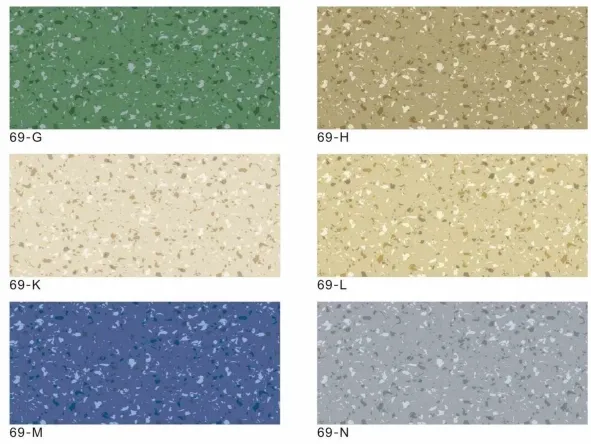Choosing the Best Linoleum and Vinyl Flooring for Your Home Décor
The Evolution and Benefits of Linoleum and Vinyl Flooring
In the world of interior design and home improvement, flooring choice plays a pivotal role in both aesthetics and functionality. Among the myriad options available, linoleum and vinyl flooring have emerged as popular choices for homeowners and designers alike. Each type of flooring offers distinct advantages and has evolved significantly over the years, catering to diverse needs and preferences.
Understanding Linoleum Flooring
Linoleum is a natural flooring material made from a blend of linseed oil, cork dust, wood flour, and natural pigments. It has been around since the mid-19th century and was widely used in households due to its durability and ease of maintenance. One of the primary benefits of linoleum flooring is its eco-friendliness. Being composed of renewable materials, linoleum is biodegradable and does not emit harmful chemicals, making it an excellent choice for environmentally conscious consumers.
In addition to its sustainability, linoleum offers a variety of styles and colors, allowing homeowners to express their personal tastes. It is available in sheets, tiles, and planks, which can seamlessly integrate with different interior styles, be it rustic, modern, or eclectic. Linoleum also boasts anti-static properties, making it a great choice for electronic equipment spaces, as it resists the build-up of dust and dirt.
However, linoleum is sensitive to moisture, and while it can be used in bathrooms and kitchens, proper installation and maintenance are crucial to prevent water damage. Regular cleaning with a damp mop and a pH-neutral cleaner will help maintain its beauty and extend its lifespan.
The Rise of Vinyl Flooring
linoleum vinyl flooring

Vinyl flooring, on the other hand, is a synthetic alternative that gained immense popularity in the latter half of the 20th century. It is primarily made from polyvinyl chloride (PVC) and comes in sheets, tiles, and luxury vinyl planks (LVP). Vinyl flooring has captured the market due to its durability, affordability, and water resistance, making it an ideal choice for high-traffic areas and moisture-prone spaces like kitchens and bathrooms.
One of the significant advantages of vinyl flooring is its versatility in design. Advances in printing technology have allowed manufacturers to create vinyl planks that closely mimic the appearance of hardwood, stone, and ceramic tiles. This means homeowners can achieve the desired aesthetic without the associated cost and installation challenges of natural materials.
Vinyl is also known for its comfort underfoot, providing a softer surface compared to traditional hard flooring options. This feature, combined with its sound-absorbing qualities, makes it an excellent choice for families with children and pets. Additionally, maintenance is relatively effortless, requiring only regular sweeping and occasional mopping to keep it looking new.
Conclusion
Both linoleum and vinyl flooring have significant roles in modern home design, each bringing unique benefits to the table. Linoleum shines with its eco-friendly attributes and natural composition, while vinyl offers unmatched durability and a wide range of styles and designs. When choosing between the two, homeowners should consider their specific needs, budget, and aesthetic preferences.
Ultimately, the right flooring can enhance the overall atmosphere of a home, providing a foundation that is both functional and beautiful. Whether opting for the timeless appeal of linoleum or the modern practicality of vinyl, making an informed decision can lead to lasting satisfaction in any living space. As flooring continues to evolve, these materials will undoubtedly remain key players in transforming interiors and creating welcoming environments for years to come.
-
The Evolution of Luxury Flooring Guangzhou Enlio's JourneyAug.05,2025
-
Innovative Commercial Flooring Solutions from Guangzhou Enlio SportsAug.05,2025
-
Premium Interior Solutions with Quality Skirting OptionsAug.05,2025
-
Masking Tape The Essential Tool for Professional ApplicationsAug.05,2025
-
SPC Vinyl FlooringJul.18,2025
-
Home SPC FlooringJul.18,2025




